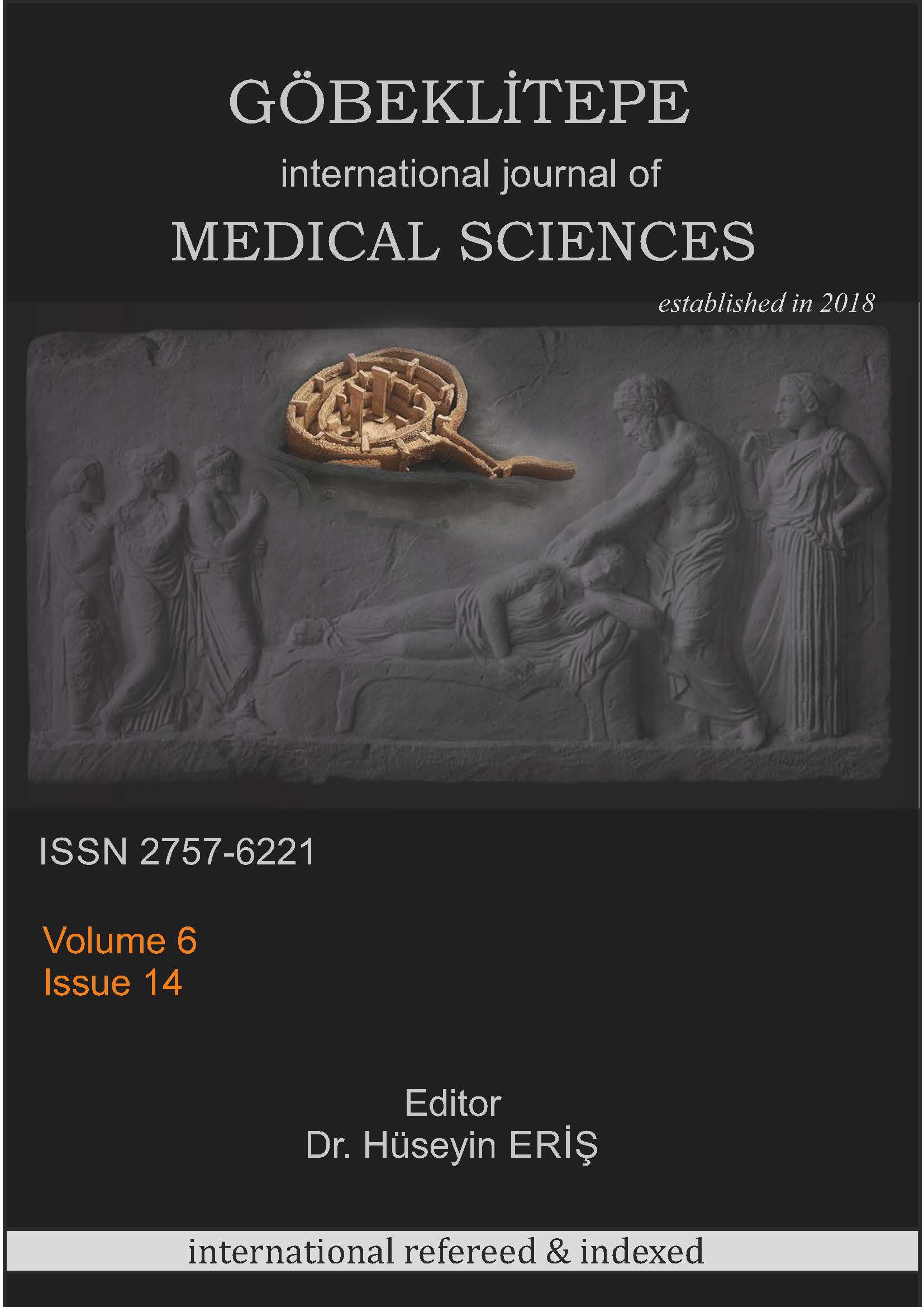The THE RELATIONSHIP BETWEEN PERCEIVED SOCIAL SUPPORT AND CREATIVE THINKING SKILLS IN NURSING STUDENTS
Effect of Perceived Social Support Level on Creative Thinking Skills
DOI:
https://doi.org/10.55433/gsbd/236Keywords:
Creativity, Nursing Students, Social SupportAbstract
This study was conducted in order to examine the relationship between perceived social support and creative thinking skills in nursing students. The descriptive and corelational study was carried out with 306 nursing students. Data were collected using a multidimensional scale of perceived social support and a creative thinking skills scale. The average perceived social support score of the students was the highest in the second year, and lowest in the fourth year. No significant difference was determined in the average score obtained from the creative thinking skill scale according to the grade level, and because the average score of all classes was between 40-64 points, all the students were classified as "above average level of creativity". The highest average scores were seen in fourth-grade students. There was no statistically significant relationship between the multidimensional perceived social support scale total score, sub-dimension scores, and creative thinking skills scale mean scores of the nursing students (p˃0.05). These results can be considered important in terms of showing the positive effect of nursing education on creativity, as the students were seen to be classified as above-average creativity and their creativity levels increased with increasing education.
References
Gallagher, E.N., Vella-Brodrick, D.A. (2008). Social support and emotional intelligence as predictors of subjective well-being. Personality and Individual Differences. 44: 1551–61.
Topkaya. N., Kavas. A. (2015). Perceived social support, life satisfaction, Attitudes towards psychological help and intentıon to seek help: a model study. International Periodical For The Languages, Literature and History of Turkish. 979–96.
Malkoç. A. (2015). Relationship among resilience, social support, coping and psychological well-being among university students. Turkish Psychological Counseling and Guidance Journal. 35–43.
Yıldırım, N., Karaca, A., Cangur, S., Acıkgoz, F., Akkus, D. (2017). The relationship between educational stress, stress coping, self-esteem, social support, and health status among nursing students in Turkey: A structural equation modeling approach. Nurse Educ Today. 48: 33–9.
Dil, S., Aykanat, G.B. (2016). An examination of the relationship between anger, stress, hopelessness and perceived social support in nursing students. J Psy Nurs. 7: 21–8.
Üstündağ, H., Bostancı, Z., Aydoğan, B. (2019). Relationship Between Coping Style With Stress And The Levels Of Perceived Social Support Among Nursing Students. Journal Of Health Science And Profession. 6(1): 74-83.
Aydın, A., Kahraman, N., Hiçdurmaz, D. (2017). Determining The Levels Of Perceived Social Support And Psychological Well-Being Of Nursing Students. Journal Of Psychiatric Nursing. 8(1): 40–47.
Dolgun, G., Erdoğan, S. (2012). Creativity in Nursing, Critical Thinking and Interpretation of Findings. Anatolian Journal of Nursing and Health Sciences. 15(3): 223-28.
Tayhan, A., Çetinkaya, A., Özmen, D., Büyük, D.,Uyar, F. (2023). Comparison of creative thinking and cognitive flexibility levels according to academic achievements of nursing students. Huhemfad-Johufon. 10(1): 42-51.
Çetin, Z., Üstündağ, A., Kerimoğlu, G., Beyazıt, U. (2015). Investigation of Tests Used to Measure Creativity in Children in Our Country and in the World. H.U. Journal of the Faculty of Health Sciences. 2(2): 31-40.
Emir, S., Erdoğan, T., Kuyumcu, A. (2007). The Relationship between the creative thinking levels of Turkish language teaching students and their socio-cultural characteristics. Hasan Ali Yücel Journal of the Faculty of Education. 7(1): 73-87.
Uludağ, E., Uzun, S. (2018). Investigation Of Creative Thinking Skills Of Students İn Nursing Education (Sample Of Gümüşhane). GÜSBD. 7(3): 63- 70.
Körpe, G., Demir, S. (2018). Creatıvıty levels and problem-solvıng skılls of nursıng students ınternatıonal refereed journal of nursıng researches. International Refereed Journal Of Nursing Researches. 12: 1-21.
Erkin, Ö., Göl, İ. (2021). Investigation of the relationship between cognitive flexibility and creativity levels of the faculty of health sciences students. Sağ Aka Derg. 8(2): 97-102.
Zimet, G.D., Dahle, N.W., Zimet, S.G., Farley, G.K. (1988). The Multidimensional Scale of Perceived Social Support. Journal of Personality Assessment. 52 (1): 30-41.
Eker, D., Akar, H., Yaldız, H. (2001). Factorial structure, validity, and reliability of revised form of the multidimensional scale of perceived social support. Turkish Journal of Psychiatry. 12: 17–25.
Whetton, D.A., Cameron, K.S. (2002). Answers to Exercises Taken From Developing Management Skills. (3rd Edition). At Northwestern University.
Aksoy, B. (2004). Problem-Based Learning Approach in Geography Teaching (Thesis no. 145065). [PhD Thesis]. Gazi University, Ankara.
Ku, Y.L., Chang, C.F., Kuo, C.L., Sheu, S. (2010). The application of creative thinking in nursing education. Hu Li Za Zhi Chinese Journal of Nursing. 57(2): 93-98.
Chan, Z. (2013). A Systematic Review Of Creative Thinking/Creativity in Nursing Education. Nurse Education Today. 33: 1382–1387.
Emmanuel, E., Collins, D,. Carey, M. (2010). My face, a window to communication: using creative design in learning. Nurse Education Today. 30(8): 720–725.
Hall, J., Mitchell, M. (2008). Exploring student midwives creative expression of the meaning of birth. Thinking Skills and Creativity. 3(1): 1–14.
Lillyman, S., Gutteridge, R., Berridge, P.(2011). Using a storyboarding technique in the classroom to address end-of-life experiences in practice and engage student nurses in deeper reflection. Nurse Education in Practice. 11(3): 179–185.
Karataş, S., Özcan, S. (2010). The effect of creative thinking activities on students' creative thinking and project development. Journal of Ahi Evran University Faculty of Education. 11(1): 225-243.
Tulum, Y.D., Memiş, S. (2006). Developing creativity in nursing education. Journal of Ege University School of Nursing. 22: 245–52.
Şen, H., Yılmaz, F., Gürdogan, P. (2013). Creativity in Nursing. Academic Perspective Journal. 38: 1-8.
Downloads
Published
Versions
- 2024-07-02 (2)
- 2024-01-01 (1)
How to Cite
Issue
Section
License
Copyright (c) 2023 Göbeklitepe Sağlık Bilimleri Dergisi

This work is licensed under a Creative Commons Attribution 4.0 International License.




